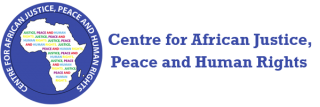
Photo credit: Morocco World News
More than 771 million adults are still to this day illiterate, and of these more than 80% are women. Illiteracy is prevalently seen in countries struck by conflict or disasters. The highest illiteracy levels are all seen in countries with the most political turbulence and extreme levels of poverty. The worst of which are Niger, Chad, South Sudan and the Central African Republic. These countries show the profound consequences that crises have on children’s education and how that keeps their growth stagnant.
Literacy is a powerful tool that enables personal growth, engagement in society and helps to lift individuals out of poverty. It is defined as “the ability to read and write”. Having more individuals become literate creates even bigger opportunities for societal development. In 1967, UNESCO declared International Literacy Day on the 8th of September every year to bring attention to the necessity of access to quality education. This stemmed from the conference of Ministers of Education on the Eradication of Illiteracy held in 1965. Assigning the importance and urgency of literacy on the world agenda sparked nations to inquire into possible developments that could be made. The current global literacy rate in 2022 stands at 86.3%, which is a steady increase of 4% every year since 1960. This increase was due to the spread of printed books across the world which made literacy become more important to societies. Despite this increase, there is still a long way to go.
Eradicating poverty is one of the biggest opportunities for improving literacy rates. Literacy at all levels is beneficial to individuals, families and communities and for individuals living in developing countries, getting education is sometimes the only way out of poverty. It creates extra opportunities that those who are illiterate don’t have. This can help both provide for the family and contribute to the bigger economy. As written by Olivia Giovetti, if all students in low-income countries had access to basic education, there would be around 171 million people that would be able to get out of poverty. Additionally, being able to empower women and girls through education creates a whole new perspective for many societies. Improving literacy also helps mitigate major health issues seen in developing countries such as infant mortality rate. Individuals who receive an education are less vulnerable to illness as they learn how to protect themselves from it. All of these benefits of increasing literacy shows the extent to which this can create a more sustainable society in many ways. We often take literacy for granted as we use it in our everyday lives, however not all individuals have the access to these essential skills.
In light of the recent pandemic, it became necessary to find alternative learning ways to ensure that there was access to education. Through that worldwide struggle came new ideas on how to redesign the current ways of learning. However, these new forms of online education created an even bigger obstacle for the marginalised groups as they did not have access to this. Therefore, International Literacy Day this year sets its focus on the theme “transforming literacy learning spaces” as a way to help discover the potential of learning spaces, especially for the 31% of children who did not have access to online learning platforms. The pandemic has opened our eyes to the challenges that come with having an ever-growing world as the changes that benefit some, bring others profound disadvantages. The theme this year is challenging the current literacy spaces in order to build resilience. For nations to be forced to reevaluate whether their educational systems were effective, due to the pandemic, has helped to see that going back to normal education might not be the most successful progression. Despite there being damage done in terms of education, we can take this as an opportunity towards reinventing the ‘traditional literacy learning spaces’.
The way forward in this urgent matter is for more developing countries to invest into education programmes and to find innovative ways to broaden their reach. The benefits of this have been seen in Morocco’s long fight against illiteracy. Despite still being below international standards of literacy, Morocco has for two decades put literacy as their primary issue. Their determined work towards education for all, regardless of poverty and cultural issues, has increased their literacy rate from 41.6% in 1994 to 73.6% in 2018. This is a great example of how commitment to the development of new educational programmes and rebuilding educational infrastructure can be effective on a national scale. Through the cooperation of educational authorities, they managed to establish new literacy programmes that helped almost four million people. On top of that, aid has been dispersed, especially to women who have been facing difficulties due to the gender gap. NGO workers played a massive role in their development as they created a literacy training program in which marginalised groups can receive literacy classes.
This day holds utmost importance for creating awareness for the underdeveloped countries that lack the infrastructure and resources to ensure quality education. There is so much potential for national and international development if children are able to create a brighter future for themselves. With the help of both local authorities and external organisations, initiatives can be made that tackle this major obstacle to development.
Sources
3 in 10 young people in conflict or disaster-stricken countries are illiterate
6 Benefits of Literacy in the Fight Against Poverty
How to Eradicate Illiteracy without Eradicating Illiterates?
Improving literacy in Africa | Global Partnership for Education
International Literacy Day | UNESCO
The Importance of Education, How Literacy Improves Lives
